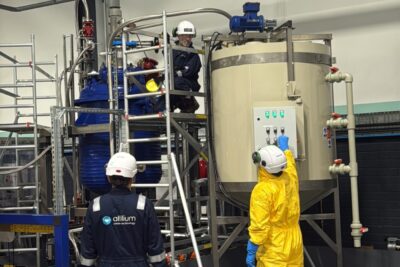German researchers achieve precise analysis of space charges in solid-state batteries
The MPI-P reports that, in collaboration with Japanese research colleagues, it has investigated the phenomenon of space charge effects, which introduce additional resistance during both charging and discharging of solid-state batteries. Using advanced microscopic techniques, the team claims to have been able to ‘determine the spatial extent and the resulting resistance of the space charge zone for the first time’.
According to the researchers, space charge effects have previously hindered the performance of solid-state batteries, forming primarily at the positive electrode. The study now offers a foundation for mitigating these effects by modifying electrode structures or materials, the MPI-P states. The team recently published its findings in the journal ‘ACS Nano’.
Effect occurs primarily at the positive electrode
“A battery is a kind of pump,” explains Rüdiger Berger, a group leader at MPI-P. “Ions, or charged atoms, move inside the battery, which must be balanced on the outside by a flow of electrons and thus a flow of current.” As ions migrate within the battery, a space charge layer can develop at the internal interfaces, repelling other migrating ions. “This charge layer creates additional resistance and thus losses within the battery,” the researchers note.
The German team discovered that this effect is most pronounced at the positive electrode, where a charge layer thinner than 50 nanometres forms—comparable to the thinnest part of a soap bubble. Additionally, the researchers found that the space charge layer is dynamic, meaning its behaviour varies depending on the battery’s state of charge. While this layer accounts for approximately seven per cent of the battery’s total resistance, its impact can vary significantly depending on the electrolyte materials used.
Until now, the size of this charge layer and its influence on current flow have remained poorly understood, according to the MPI-P. “Various research teams around the globe have already investigated this effect in previous studies, but depending on the method used, they arrived at completely different estimates of the thickness of the charge layer.” To address this, the international team led by Berger employed two microscopic techniques to investigate where and how the charge layer forms. The challenge, they explain, was to analyse the interface of a model battery in quasi real-time and across different states of charge.
New techniques for deeper insights in real time
The team constructed a thin-film model battery and analysed it using Kelvin probe force microscopy and nuclear reaction analysis. “Using Kelvin probe force microscopy, they were able to scan the battery’s cross-section – a cut-open battery, so to speak – with a fine needle and learn more about the local influence of voltage and observe electrical potentials in real time,” the researchers explain. Nuclear reaction analysis further enabled them to detect lithium accumulation at the interface with the battery’s positive electrode.
“Both techniques are new in battery research and can also be used for other questions in the future,” said Taro Hitosugi from the University of Tokyo. Through further investigations, the team aims to identify methods for reducing resistance and enhancing the performance of solid-state batteries by optimising electrode materials or structures.
mpip-mainz.mpg.de
Este artículo fue publicado por primera vez por Cora Werwitzke para la edición alemana de electrive.





0 Comentarios